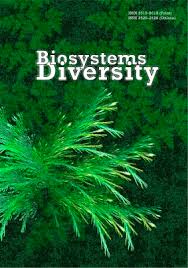Bryophytes on the devastated territories of sulphur deposits and their role in restoration of dump substrate
Bryophytes on the devastated territories of sulphur deposits and their role in restoration of dump substrate
Author(s): I.V. Rabyk, O.V. Lobachevska, N.Y. Kyyak, O.I. ShcherbachenkoSubject(s): Evaluation research, Human Ecology, Environmental interactions
Published by: Дніпропетровський національний університет імені Олеся Гончара
Keywords: mosses; life forms; reproduction; photosynthesis activity; organic carbon;
Summary/Abstract: Bryophytes possess a wide ecological diapason allowing them to populate substrates of technogenic origins which are scarcely suitable or completely unsuitable for viability of vascular plants. 49 bryophyte species, which belong to 2 divisions, 3 classes, 8 orders, 17 families, and 33 genera have been found on the dump territory of sulphur extraction of the mining-chemical enterprise “Sirka” (Yavoriv district, Lviv region). Seven transects, three on the north slope (base, slope, top), three on the south slope and one on the plateau were laid for sample selections. 20 investigated 0.5 × 0.5 m plots located 2 m apart were analyzed within each 10 × 10 m transect. Specific composition, life forms, projective cover, biomass of bryophytes, numbers of male, female and sterile plants, moisture content in the turfs, pH and physiological investigation of mosses were determined on each plot. The quantitative analysis of the biomorphological structure allowed us to establish the dependence of the spread of life forms on exposition and slope height; essential variability of the projective cover and moss biomass. Bryophyte cover plays an essential part in optimization of the moisture regime and surface layer temperature of technogenic substrates, improving the conditions of growth localities. We established that on the dump the dominant moss species are dioecious with a high level of reproductive effort (sexual and sexless), with short ontogenesis and age of first reproduction, which provides the chance to produce the maximum number of progeny in the minimum period and to form a complete moss cover.
Journal: Biosystems Diversity
- Issue Year: 26/2018
- Issue No: 4
- Page Range: 339-353
- Page Count: 15
- Language: English

